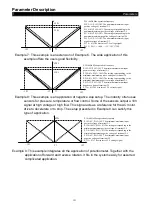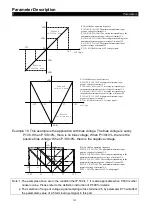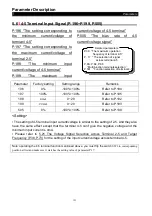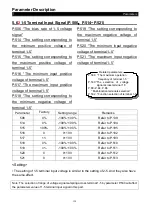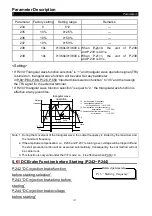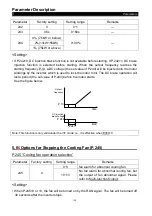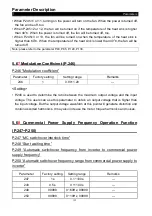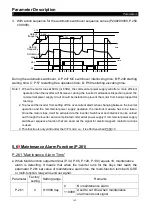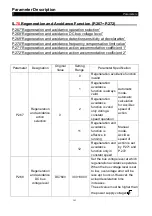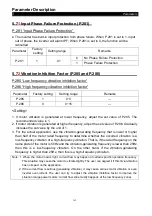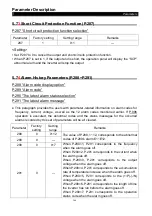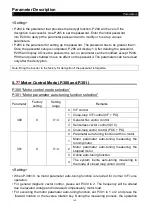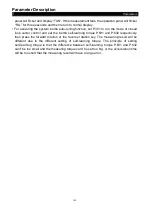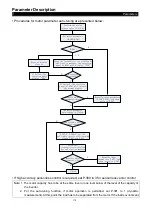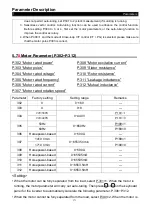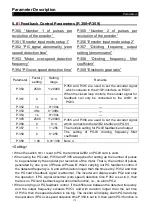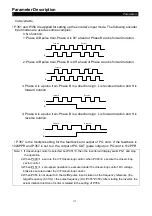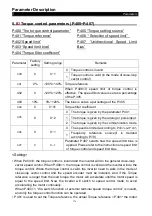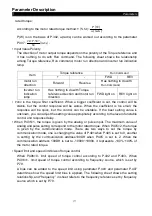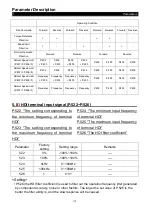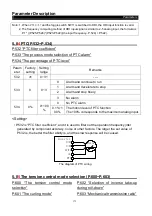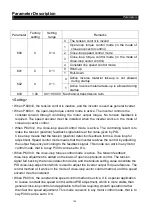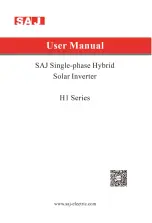
Parameter Description
Parameters
165
5.7
1
Input Phase Failure Protection (P.281)
P.281 “Input Phase Failure Protection”
● The inverter has built-in input protection from phase failure. When P.281 is set to 1, input
out of phase, the inverter will alarm IPF; When P.281 is set to 0, the function will be
cancelled.
Parameter
Factory
setting
Setting range
Remarks
P.281
1
0,1
0
No Phase Failure Protection
1
Phase Failure Protection
5.7
2
Vibration Inhibition Factor (P.285 and P.286)
P.285 “Low frequency vibration inhibition factor”
P.286 “High frequency vibration inhibition factor”
Parameter
Factory setting
Setting range
Remarks
P.285
1
0~3
---
P.286
0
0~15
---
<Setting>
1. If motor vibration is generated at lower frequency, adjust the set value of P.285. The
recommended value is 1.
2. If motor vibration is generated at higher frequency, adjust the set value of P.286. Gradually
increase the set value by the unit of 1.
3. For the actual application, use the vibration-generating frequency that is lower or higher
than half of the motor rated frequency to determine whether the occurred vibration is a
low-frequency vibration or a high-frequency vibration. That is, if the rated frequency on the
name plate of the motor is 50Hz and the vibration-generating frequency is lower than 25Hz,
then this is a low-frequency vibration. On the other hand, if the vibration-generating
frequency is higher than 25Hz, then this is a high-frequency vibration.
Note: 1. When the motor load is light, current flow may happen at certain specific operation frequency.
This situation may cause the motor to vibrate slightly. The user can neglect it if this trivial vibration
has no impact on the application.
2. If the current flow is serious (generating vibration), it may cause serious motor vibration or even
inverter over-current. The user can try to adjust the vibration inhibition factor to improve the
situation (Large power motors’ current flow zone mostly happens at the low frequency zone).

